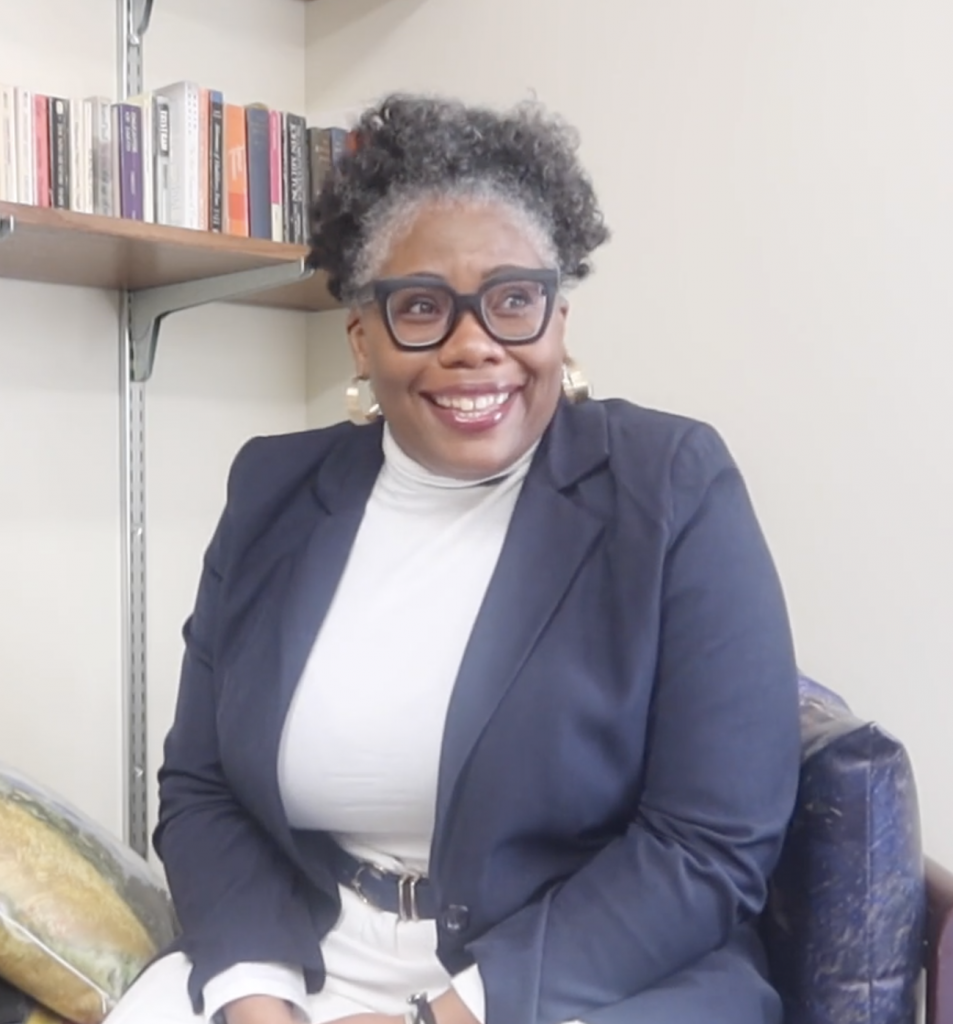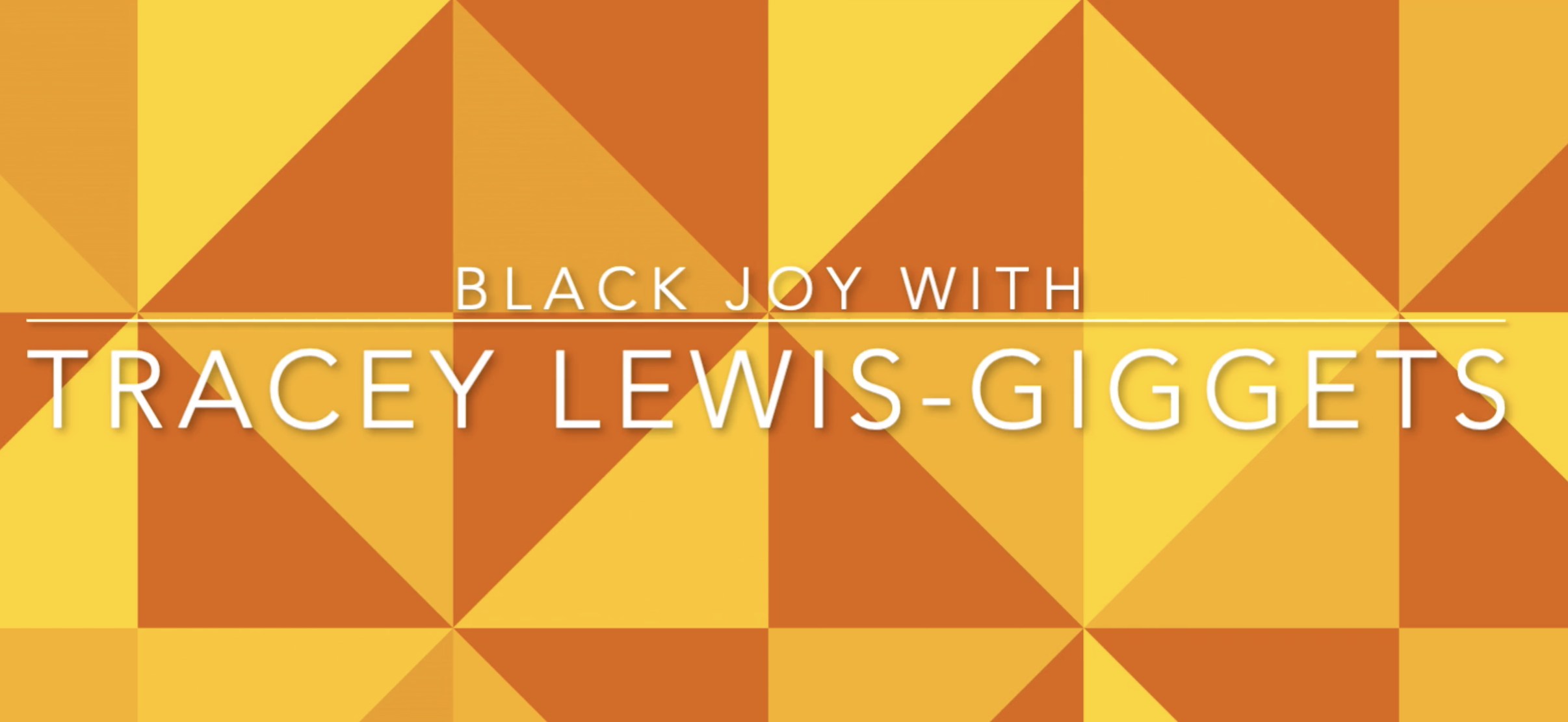Condensed for blog post… for the full interview, follow the link below
You emphasize the performativity of black joy, imitating moments of past joy to create a joyful response in the central nervous system. What have been some moments of joy for you recently?
Honestly, I swing regularly. That is something that has become my personal and spiritual practice, especially when I am at the height of anxiety; I will either go to the neighborhood playground or my husband will push me from the swing we hung up at our home. Sometimes, honestly, joy is vegging out on the couch watching trash television… especially HGTV. My daughter truly is a source of joy– she is hilarious and a complete goofball. Engaging with her as she grows up is a source of joy and helps me gain perspective… to come back home and really consider what matters.
What is your response to the critique of black joy by some within the black community about expressing black joy in public spaces where it might be misused or misinterpreted?
I think one of the beautiful things about black joy is that it doesn’t care about the gaze. I look at black joy as a mechanism for healing and restoration. Yes, there is resistance, and it can be wielded very strategically and in protest that you can’t take this joy from us. Joy can be resistance, but the next leg of the race is that joy is a form of healing, and healing doesn’t care about who is watching because I am demonstrating this joy for my own internal healing and the healing of my people. So, what an outside entity might think about it, twist it, commodify, or colonize it, doesn’t really matter because I intend to restore and help my people find outlets for release.
The role of community and family in fostering joy and resilience is a prevalent theme in your book. How might we ensure that college campuses are safe spaces for the journey toward black joy?
Hmm. I think most college campuses and academia in general need an overall overhaul of the systems that it has in place in terms of how it defines what is scholarly and what is not– who is scholarly and who is not. There needs to be an examination of what safety looks like, even in the most progressive liberal spaces. We need to examine the language used, the perceptions around respectability, and what that looks like. I think there is a long way to go. I don’t even know the answer because academia currently is, in many ways, a hierarchy and an elitist way of seeing an individual or a soul. I think when we have more empathy, not sympathy, we will be able to create safe spaces almost automatically.
One of my research focuses on imitation in the academic sphere of being taught to repeat what the authority has always said… so when new and different voices come into academia, there is an initial silencing. So, there is definitely an academic game we are expected to play when the game is not made for anyone beyond the authorities that made it to begin with.
Exactly, and I would add to that by saying, maybe even intentionally so. In that case, many people, especially from marginalized communities, are saying: ‘Well, why play? Why don’t I create my own game?’ … When you enter an environment wanting to create change, and you get caught up forcibly in that system, in that game, and the only way out is getting out, well, then what do you do? It is a hard question because I left academia for many of those same reasons– trying to create change and bear the weight.
How do you balance your personal spirituality with the collective movement?
My own life has shown me that when I was so externally focused, I became disembodied from myself, and that disembodiment meant that I was less effective out there. So when my body forced me to do this internal work– I wrote black joy, I ended up being more effective for the collective. I think the more I work on my internal individual healing, the more I can illuminate a pathway for collective healing and justice. I don’t think that we can do the authentic forms of intellectualism without the both/and, the empathy, the bias.
One of my favorite concepts points to the notion that we will never escape our inherent biases in academia, and pretending that we can provide some robotic, intellectual theory without it being steeped by our own pain, trauma, and desire only perpetrates an illusory view of humanity that hinders progress and healing.
Absolutely, and that doesn’t have to be a bad thing. I think people hesitate when they hear that because they assume bias is bad. But engaging with that soul legitimizes the work and strengthens it. We should be driven by those questions that we really want to know.
What are some of your upcoming projects?
The second book that came out in the second year of Black Joy is Then They Came For Mine: Healing From the Trauma of Racial Violence. The book is my baby, and its premise is around my own experience with racial violence, having lost a family member to a mass shooting. That grief allowed me a lens into how we might heal from this constant barrage of violence, especially on social media. In that book, I unearth old texts and stories around racial violence and work through my own stories and the narratives of others. That experience was a lesson that grief and joy can live simultaneously in the body, that as much as there has been historical and present generational trauma, there has also been generational joy and resilience, and accessing one can help us process the other. So, that book is a project I will focus on in future talks. Then, the Black Joy Playbook will come out in October, and that book is a journal that helps people map out their own journeys toward black joy. I am also in conversation to create a documentary for Black Joy.
This month marks two years since Black Joy was published. Looking back, is there anything you would have done differently if you were writing the book today?
I firmly believe that the book would look different if I wrote it today. I mean, I have lived through a pandemic, I am the mother of a tween, which is entirely different, and there were essays that I cut then that I would add today. We had about forty-two essays, and there ended up being around thirty-six, and so I will be talking to people, and they will bring up a particular topic, and I’m like– ‘Yeah, I actually wrote about that, but it didn’t make the book!’ Ha. But I think the book is what it is supposed to be in the world– if they come to me about a second edition, we can talk about those essays. Still, for the most part, the book is structured so that readers can see the resistance, resilience, and restoration as a neat way of exploring black joy. I’m good with it!

